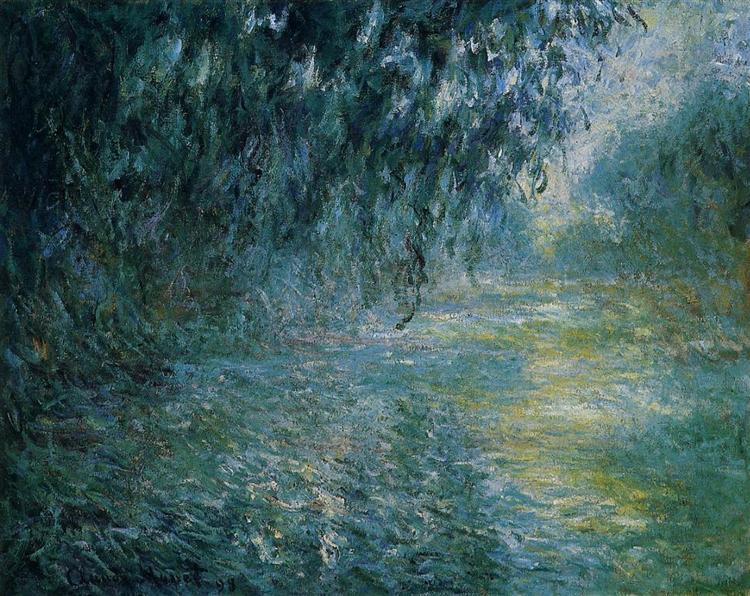Kuvaus
Claude Monet's 1898 painting "Morning on the Seine in the Rain" masterfully encapsulates the sensibility of Impressionism and the technical mastery of its author. A pioneer of the Impressionist movement, Monet will be remembered not only for his revolutionary color application techniques, but also for his ability to capture the light and atmosphere of a particular scene. In this painting, Monet offers us a threshold into an architectural experience as he observes everyday life on the Seine, a river that marked the artist's life and work.
Looking at the composition, one can see how Monet uses a soft palette evoking a rainy day, thus creating a sense of melancholy and introspection. Greyish and blueish tones dominate the canvas, suggesting life in a humid environment shrouded in a light mist. However, the artist does not limit himself to a monotonous treatment of colours; on the contrary, energetic brushstrokes and subtle nuances reveal a vibrant interplay of light and shadow. The light reflects on the water of the Seine, illuminating the background in a constant dialogue between the grey tones of the cloudy sky and the silvery sparkles that emerge on the surface of the river.
The canvas features several elements that add visual and narrative interest. In the foreground, pleasure boats and small craft sit at anchor, symbolizing the silent drama of the landscape. On the left, Monet suggests the presence of human figures, perhaps fishermen or boaters, whose silhouettes are blurred by a play of shadows. This device provokes a sense of mystery and curiosity, inviting the viewer to imagine their stories and lives. Through these figures, Monet infuses his work with a temporal dimension, suggesting both the fleetingness of the moment and the enduring beauty of nature.
A notable feature of “Morning On The Seine In The Rain” is its loose, rapid brushstroke technique. Monet moves away from minute detail and focuses on capturing the very essence of the moment – a hallmark of Impressionism. This technique not only allows for greater dynamism in the depiction of the landscape, but also provides a palpable sense of movement, as if the air were permeated with the rain and life of the river. In this context, Monet manages to turn adverse weather conditions into a vital element of visual composure, demonstrating how bad weather can be equally beautiful and evocative.
Although Monet is best known for his landscapes and illuminated scenes, Morning on the Seine in the Rain is situated in a deeper conversation about the relationship between humans and their environment. This type of representation was innovative in its time, as it offered an alternative view of nature and the notion of landscape. The work reflects the importance of the present moment, a philosophy that permeated Monet's work, as well as the concerns of his time, where social and technological changes were intertwined with art history.
In short, “Morning On The Seine In The Rain” is a work that not only highlights Monet’s technical skill but also invites reflection on the perception of the landscape and the experience of life at a specific moment in time. The mastery with which the artist captures the atmosphere and moods of nature underscores the essence of Impressionism, a movement that transformed art and continues to resonate to this day. Through this work, Monet reminds us that every moment, no matter how ordinary or ephemeral it may seem, has the potential to be extraordinary.
KUADROS ©, a famous painting on your wall.
Hand-made oil painting reproductions, with the quality of professional artists and the distinctive seal of KUADROS ©.
Painting reproduction service with satisfaction guarantee. If you are not completely satisfied with the replica of your painting, we will refund 100% of your money.

